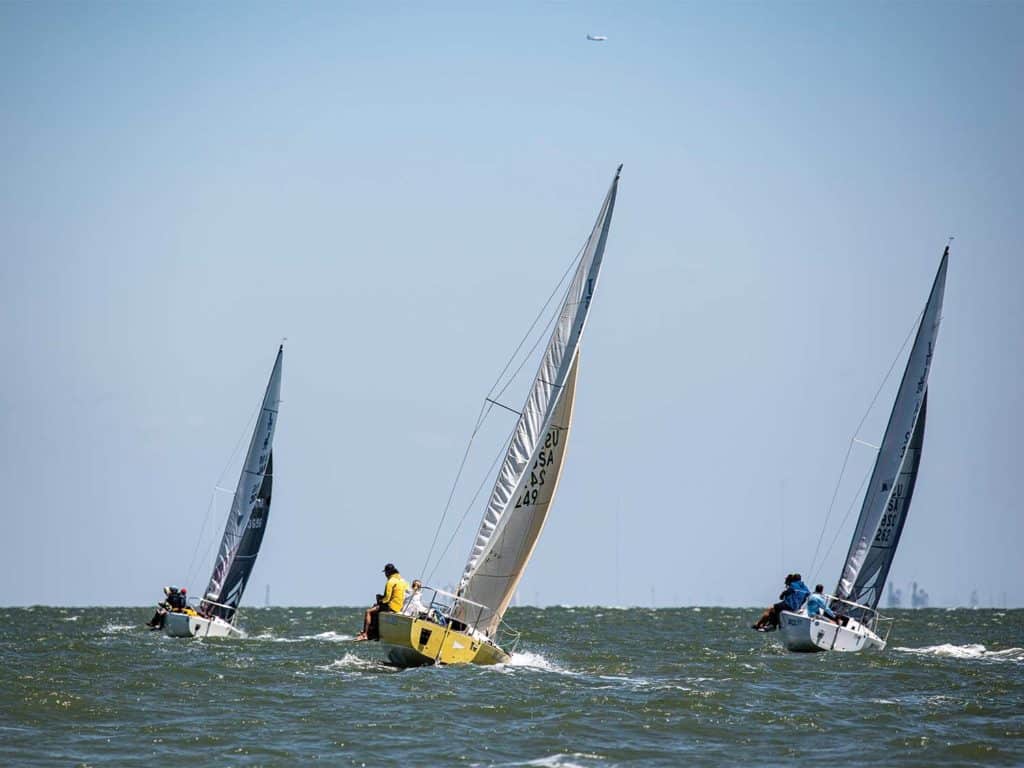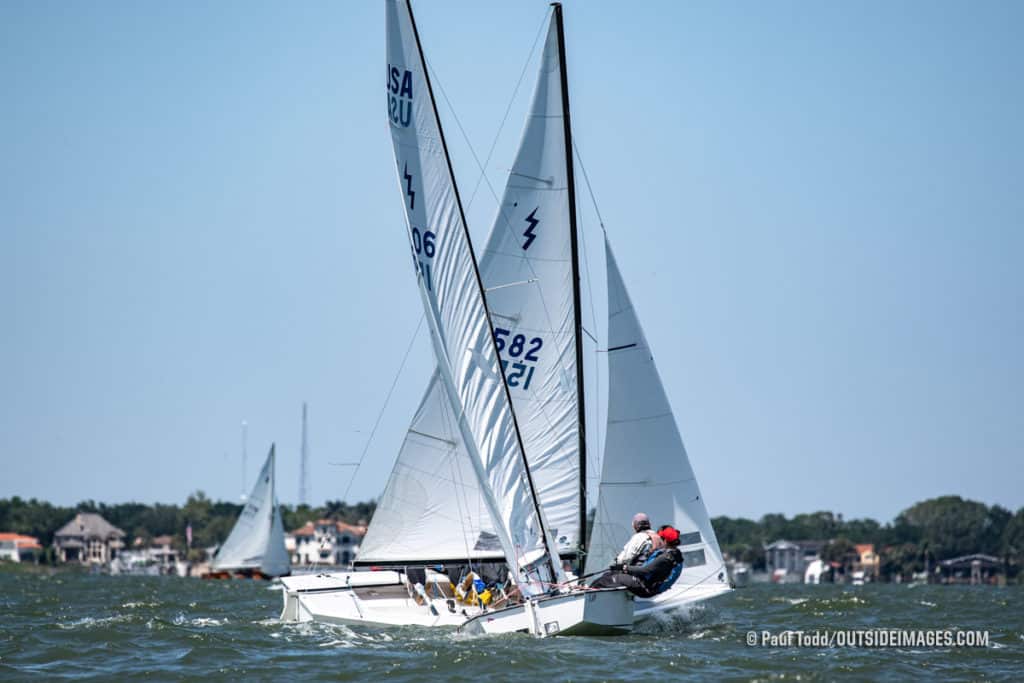
Sailboat Racing Tips: Mainsail Trim Basics
Sailing World Racing Editor Mike Ingham walks us through the basic mainsail trim adjustments with deep dive in into flow and feel.

Sailing World Racing Editor Mike Ingham walks us through the basic mainsail trim adjustments with deep dive in into flow and feel.

The bigger the fleet, the harder it can be to score consistent top finishes, but a couple of young 420 aces show how it can be done.

Sailing World racing editor Mike Ingham provides the essential trimming techniques for the symmetric spinnaker, with tips on trim, pole height and onboard communications.

How do you prevent a port-tack boat from fouling at the weather mark? Shut door, says Mike Ingham, and let them know they’re not welcome.

Professional coach and champion sailor Mike Ingham guides us through the steps to defending a position on the starting line to get a fast and clean start.

Where there is wind, there is speed, so the goal of the wind spotter is to look for clues on the water and above.

Consider some old-school advice on easy ways to finish well by not making these simple mistakes.

As the racecourse narrows near the weather mark, look for opportunites to make big gains.

An otherwise promising finish crumbles as a result of a single momentary lapse of awareness.

An essay on the virtues of defeat. From Yacht Racing, March 1972

Tactics and boatspeed are one thing, but you still need a reasoned overall strategy before starting any race.

Clean air and a fast angle are key to a well executed downwind finish when racing with an asymmetric spinnaker.

Sailing World Racing Editor Mike Ingham walks us through the basic mainsail trim adjustments with deep dive in into flow and feel.

The bigger the fleet, the harder it can be to score consistent top finishes, but a couple of young 420 aces show how it can be done.

Sailing World racing editor Mike Ingham provides the essential trimming techniques for the symmetric spinnaker, with tips on trim, pole height and onboard communications.

How do you prevent a port-tack boat from fouling at the weather mark? Shut door, says Mike Ingham, and let them know they’re not welcome.

Professional coach and champion sailor Mike Ingham guides us through the steps to defending a position on the starting line to get a fast and clean start.

Where there is wind, there is speed, so the goal of the wind spotter is to look for clues on the water and above.

Consider some old-school advice on easy ways to finish well by not making these simple mistakes.

As the racecourse narrows near the weather mark, look for opportunites to make big gains.

An otherwise promising finish crumbles as a result of a single momentary lapse of awareness.

An essay on the virtues of defeat. From Yacht Racing, March 1972

Tactics and boatspeed are one thing, but you still need a reasoned overall strategy before starting any race.

Clean air and a fast angle are key to a well executed downwind finish when racing with an asymmetric spinnaker.
Sign up for Sailing World emails to receive features on travel destinations, event listings and product reviews as well as special offers on behalf of Sailing World’s partners.
By signing up you agree to receive communications from Sailing World and select partners in accordance with our Privacy Policy. You may opt out of email messages/withdraw consent at any time.